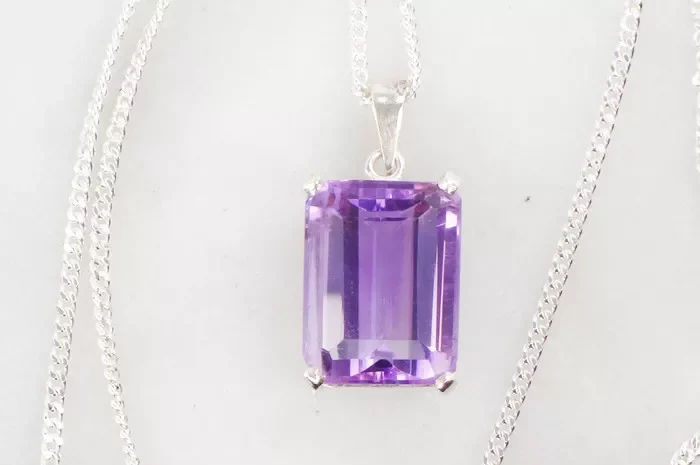Amethyst, with its entrancing purple hues, has captivated the world for centuries. Beyond its mesmerizing beauty, this gemstone boasts a fascinating geological history that traces back to its igneous origins. In this comprehensive article, we delve deep into the enchanting world of amethyst, exploring its igneous formation, unique properties, and the geological processes that have shaped this captivating gem.
The Allure of Amethyst
Amethyst, a variety of quartz, is renowned for its stunning violet to purple coloration. This captivating hue ranges from pale lilac to deep royal purple, reminiscent of regal elegance. Amethyst’s allure has earned it a prominent place in jewelry design, from intricate necklaces to delicate earrings, making it a favorite among gemstone enthusiasts and collectors alike.
Why is amethyst associated with emperors?
Amethyst’s association with emperors originates from ancient times, when its rare and regal purple color symbolized power, nobility, and royalty. The gem’s scarcity, reserved only for the elite due to its limited availability, heightened its allure. Amethyst’s connection with clarity of mind and sobering qualities also appealed to rulers seeking wisdom and leadership. As a result, amethyst became linked with emperors, representing their authority and wisdom, and reinforcing its status as a gemstone of prestige and importance in various cultures throughout history.
Igneous Formation of Amethyst
Amethyst, a purple variety of quartz, can form through igneous processes, although it’s more commonly associated with hydrothermal and metamorphic conditions. In igneous formations, amethyst can develop in several ways:
1. Pegmatite Intrusions:
Amethyst can crystallize in the cavities of pegmatite rocks, which are coarse-grained igneous rocks rich in minerals. When the pegmatite cools and solidifies, the remaining open spaces can provide conditions for quartz crystals, including amethyst, to grow.
2. Vesicles in Volcanic Rocks:
In certain volcanic environments, gases and fluids can become trapped within lava as it cools. These trapped cavities, called vesicles, can serve as spaces for amethyst formation. As silica-rich solutions percolate through these vesicles, they can deposit quartz crystals, including amethyst.
3. Hydrothermal Veins:
While hydrothermal processes are more common for amethyst formation, they can also be associated with igneous activity. Hot mineral-rich fluids from volcanic activity can infiltrate fractures and cavities in rocks, depositing quartz crystals as the fluids cool. If the source of these fluids is related to igneous processes, then amethyst can form within these veins.
While amethyst can form through igneous processes, it is relatively less common compared to its formation in hydrothermal or metamorphic environments. The striking purple color of amethyst often results from the presence of iron and other trace elements within the quartz crystal lattice.
Are Amethyst Heat Treated?
Heat treatment is a common practice in the gemstone industry to enhance the color of amethyst. When heated to specific temperatures, some amethyst varieties can undergo a transformation known as “heat-induced color zoning.” This process can result in more uniform and deeper coloration. The treatment is generally stable and widely accepted, as long as it’s disclosed to consumers. However, natural amethyst with a rich purple color is also available and highly valued. It’s important to inquire about any treatments or enhancements when purchasing amethyst to ensure transparency and make informed choices.
See Also: Are Amethysts Safe in Water: Everything You Need To Know
Is Jewelry Made Of Amethyst Beautiful?
Jewelry made of amethyst is undeniably beautiful. The regal purple hues of amethyst can range from delicate lavender to deep violet, adding an elegant touch to any piece. Amethyst’s natural sparkle and transparency make it a captivating gemstone for various jewelry designs. Whether set in intricate rings, graceful necklaces, exquisite earrings, or delicate bracelets, amethyst’s allure is timeless. Its calming energy and rich symbolism also enhance its beauty, adding a meaningful dimension to the aesthetics. From classic to contemporary styles, amethyst jewelry is a testament to both nature’s artistry and human creativity, making it a cherished choice for adornment.
See Also: Amethyst Bracelet: Unveiling the Mystical Influence
In Conclusion
Amethyst’s igneous origins reveal a mesmerizing narrative that unfolds within the Earth’s depths. From the magmatic processes that initiate its formation to the interplay of mineral-rich fluids that enhance its beauty, amethyst stands as a geological marvel that bridges the realms of science and art. As we admire the radiant purple hues of amethyst, let us also marvel at the profound forces that shape our planet’s treasures and enrich our understanding of the world around us.
FAQs
1. What’s the role of pegmatites in amethyst formation?
Pegmatite rocks, coarse-grained igneous formations, can provide open spaces for quartz crystals like amethyst to grow. When pegmatite cools, these cavities can become sites for mineral deposition, including the growth of amethyst.
2. Is amethyst jewelry attractive?
Certainly, amethyst jewelry is known for its captivating beauty. The gemstone’s purple hues range from delicate to intense, making it a popular choice for a wide range of jewelry designs. Amethyst’s inherent sparkle and transparency contribute to its allure, while its symbolic significance adds a meaningful layer to its attractiveness.
3. Are there untreated amethyst gemstones?
Yes, there are untreated amethyst gemstones available. While some amethyst is heat-treated to enhance color, there are also natural amethyst specimens with vibrant hues that have not undergone any treatment. It’s essential to ask about treatments when purchasing amethyst to ensure transparency.
4. How does amethyst get its purple color?
Amethyst’s purple color comes from the presence of trace elements, usually iron, within the quartz crystal lattice. The specific arrangement of these elements is responsible for the gemstone’s distinct purple hues, which can vary from pale lilac to deep violet.
5. Is amethyst found in specific regions due to igneous activity?
Amethyst deposits related to igneous activity can be found in various regions around the world. These regions might have experienced volcanic or other igneous processes that contributed to the formation of amethyst crystals.


